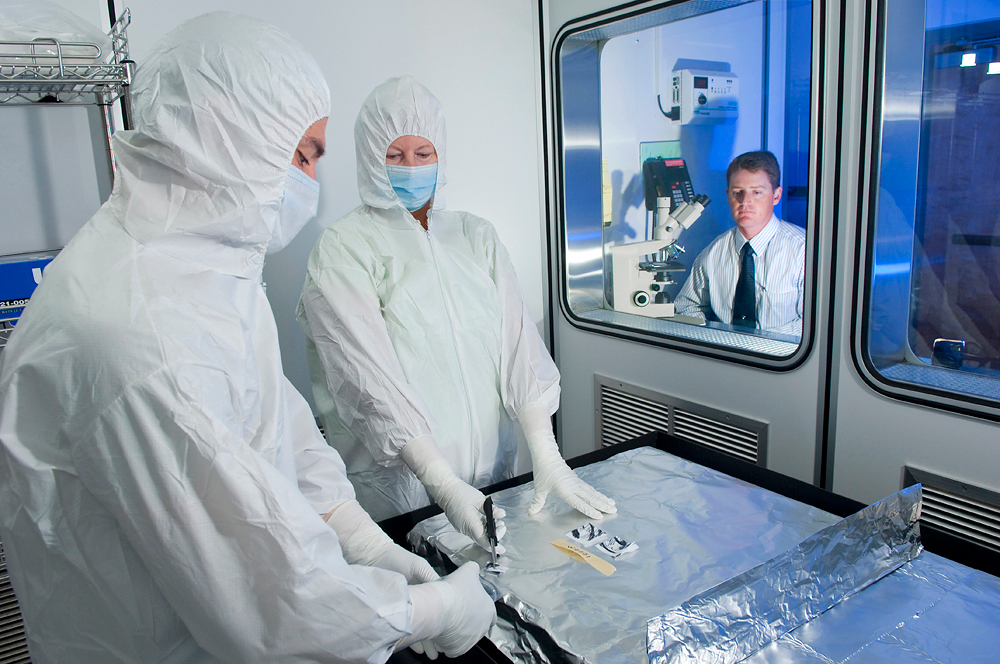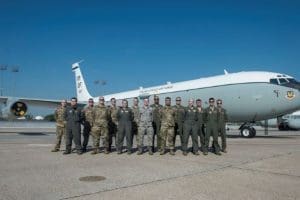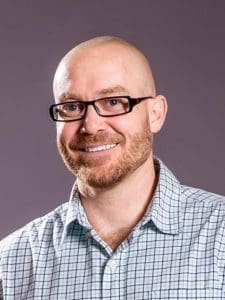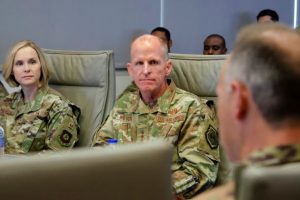Subscribe for the latest AFCS news,
job alerts, and more
SUBSCRIBE NOW
TWO-PAGE FEDERAL RESUME MANDATE IS HERE!
All federal resumes must be no more than two (2) pages.
We are America’s nuclear watch dog, dedicated to monitoring, detecting, and reporting data from foreign nuclear explosions or accidents.
North Korea’s recent nuclear tests and provocations are in the news. We’re the group that detected and analyzed data from our monitoring and sensing stations around the world that confirmed a nuclear test.
Simply put, AFTAC performs nuclear treaty monitoring and nuclear event detection by operating and maintaining the U.S. Atomic Energy Detection System (USAEDS). Consisting of a global network of more than 3,600 sensors monitored around the clock, USAEDS is the largest sensor network in the U.S. Air Force.
AFTAC provides quality technical measurements to monitor nuclear treaty compliance and develops advanced proliferation monitoring technologies to preserve our nation’s security.
Once a disturbance is detected underground, underwater, in the atmosphere, or in space, the event is analyzed for nuclear identification and the findings are reported to national and command authorities.

Our mission extends beyond nuclear testing and includes nuclear accidents. After the Fukushima Daiichi Power Plant accident in Japan we monitored the extent of the radioactive releases and collaborated with Japanese and other international authorities to analyze and monitor the disaster.
AFTAC also performs research and development of new proliferation detection technologies to enhance or assist treaty verification to limit the proliferation of weapons of mass destruction.
Our advanced array of sensors, monitoring stations, and technological advances is manned by a team of 1,000 dedicated and highly educated professionals, scientists, engineers, and trained specialists. Thinkers, innovators, analysts, administrators—all at the service of our national security in this age of nuclear proliferation.
By Staff Sgt. Jessica Montaño, 55th Wing Public Affairs / Published June 29, 2020 OFFUTT AIR FORCE BASE, Neb. —
By Staff Sgt. Jessica Montaño, 55th Wing Public Affairs / Published June 29, 2020
OFFUTT AIR FORCE BASE, Neb. — The Glass Titan Mission team was on the crew bus headed to their jet to conduct a mission, when their mission commander flagged them down and said, “change of plans; you have two hours to prepare.”
It’s flexibility like that as well as rapid global mobility, unwavering endurance, precise mission execution and expedited data analysis that helped this team earn the Air Force’s Nuclear Deterrence Operations Professional Team of the Year.
 The 45th Reconnaissance Squadron and Air Force Technical Applications Center’s Detachment 1’s Glass Titan Mission team is a crew that operates the WC-135W Constant Phoenix, which is an aircraft that collects particulate and gaseous effluents and debris from accessible regions of the atmosphere.
The 45th Reconnaissance Squadron and Air Force Technical Applications Center’s Detachment 1’s Glass Titan Mission team is a crew that operates the WC-135W Constant Phoenix, which is an aircraft that collects particulate and gaseous effluents and debris from accessible regions of the atmosphere.
“The Constant Phoenix mission is a highly specialized resource in the Air Force’s and DoD’s intelligence, surveillance and reconnaissance enterprise that is capable of providing atmospheric radiological data analysis,” said Lt. Col. Sean Orme, 45th RS. “There are only two manned aircraft in the U.S. military’s inventory capable of conducting this type of atmospheric research.”
“The detachment fields the mission compartment, sensor maintenance technicians, and scientific field analysis crew, who all have a seemingly-impossible task of working with an aging airframe, equipment well-past its advertised shelf-life, limited resources and sparing,” said Maj. Justin Guy, AFTAC Det. 1.
Recently, the crew executed a no-notice deployment that included a variety of surveillance missions from three different locations and countries across the U.S. Indo-Pacific Command.
“The team flawlessly executed operations with a partner nation we have not operated out of in over 15 years, said Lt. Col. Andrew Maus, 45th RS commander. “In the midst of that deployment, they picked-up and redeployed within three hours to respond to an international nuclear incident, maxed out their weekly flying hours, and accomplished the first positive collection of its kind in over 20 years for the Air Force.”
“Recognition for the excellent work they put forward in challenging conditions was long-overdue, and when put to the test short-notice (the team) proved ready,” Guy said. In the last decade, the Air Force contacted the Royal Australian Air Force to expand a valued ally partnership, and update and expand the scientific knowledge of an area that has not been researched.
“We conducted a site survey with our RAAF partners proving that our mission could be successfully conducted from their facilities, and subsequently were able to operate from their locations for several missions,” said Capt. Kyle Redfern, 45th RS. “This allowed us to collect samples in locations that had previously been beyond the aircraft’s range.
The Constant Phoenix mission strives to have the most accurate data on effluent debris in the atmosphere at any given time.
“Accuracy in data is what enables leadership at the Air Force level and above to make the best-informed decisions on behalf of the nation,” said Orme. “The Pacific accounts for 63.78 million miles of its surface area, which leaves a large area unanalyzed, so, to close the gap we worked with the RAAF.”
All of the missions at the 55th Wing are vital to national security by giving the President, National Security Council, and combatant commanders the ability to make informed and time critical decisions based on the most current and accurate information available.
Using our diverse ISR capabilities, we are able to provide data that allows decision makers to see through enemy deception and better anticipate likely adversary tactics, weapons and intent prior to engaging in any kinetic form of warfare,” said Orme. “This increases the likelihood of a US victory.”
The results of the no-notice tasking were immediately briefed to the President during his daily presidential briefing.
“I’ve never before experienced a no-notice tasking that carried this amount of weight with it, but the 55th Wing made sure we had the resources and skills necessary,” said Redfern. “So, we kind of just looked at each other, took a deep breath, and went after it.”
Without the Constant Phoenix mission, the Air Force would lose a large portion of their ability to hold adversaries accountable to the obligations of the Limited Nuclear Test Ban Treaty of 1963.
“Without this mission, the DoD and our nation as a whole, would find themselves less informed, less equipped and therefore less prepared to holistically and confidently confront future challenges in the nuclear arena,” said Orme.
This article originally appeared here.
By Susan A. Romano, AFTAC Public Affairs PATRICK AIR FORCE BASE, Fla. — It wasn’t what he envisioned as the final
By Susan A. Romano, AFTAC Public Affairs
PATRICK AIR FORCE BASE, Fla. — It wasn’t what he envisioned as the final step toward earning his doctorate – having to defend his dissertation virtually instead of in person before a traditional panel of judges.
The coronavirus, however, has changed the way people around the world are communicating, and this doctoral candidate was not immune to the “new norm” of social distancing.

Dr. Josh Dickey has been assigned to the Air Force Technical Applications Center here since June 2007, working as an electrical engineer in the Systems Engineering Division. His primary responsibilities centered around the sustainment of AFTAC’s worldwide geophysical sensor network.
In 2012, Dickey began his path to a Ph.D. at the University of Central Florida in Orlando, with coursework in electrical engineering. Things were rolling along for the young scientist. He maintained an enviable 4.0 grade point average and published his first paper, all while juggling his full-time job at AFTAC and witnessing the birth of his first child, James.
He wasn’t as fortunate the next semester, though. He received extended orders for a project he was working on in Morocco, which derailed his studies and forced him to drop all the classes for that semester. That, coupled with the birth of his second son Benjamin, put Dickey in a difficult position.
“I simply ran out of time and money,” he said.
But as the saying goes, everything happens for a reason. He learned about the Department of Defense’s SMART Scholarship-for-Service Retention Program that allows select DOD personnel to pursue their education in specific STEM-related fields that are in high demand by the U.S. government.
Once accepted, retention program students receive full tuition and book allowances while remaining in their permanent civil service position, earning their full salary and benefits. Their new job duties as a SMART student are to attend classes full time, maintain a 3.0 GPA and earn their advanced degree. Upon completion of their degree, scholars return to their organization and begin applying the new skills and expertise obtained from their advanced degree program.
“Not only do students get to pursue their passion during the education phase, they also begin a journey towards an empowering career to protect national security,” said Rose Day, AFTAC’s Human Resources Program Manager. “For more than a decade, SMART scholars have been working with labs and agencies throughout DOD to support the warfighter and create an impact for our national decision makers. The Retention Program launched the summer of 2016 was a great opportunity to allow current civilians to pursue advanced degrees that enhance mission capabilities without giving up their full-time job and sacrificing their family life. Josh was a perfect candidate.”
Dickey learned of his acceptance in March 2017. From there, he sat down with his wife, Suzanne, and laid out plans to sell their Florida home, pack up the family, and move to Dayton, Ohio.
“The Air Force Institute of Technology is located at Wright-Patterson AFB, which is where I completed my studies,” Dickey said. “It was my longest time away from the Sunshine State. Let’s just say it took us some time to acclimate to the midwestern weather!”
The Tampa native enjoyed his time in the Buckeye state, but as soon the degree requirements were completed, he and Suzanne were excited to move back to Florida.
“Once we’re fully settled back on the Space Coast, I will be spearheading AFTAC’s new data analytics branch within the Systems Development Directorate and applying all the research I gleaned at AFIT,” he said.
Dickey’s dissertation was entitled, “Neural Network Models for Nuclear Treaty Monitoring: Enhancing the Seismic Signal Pipeline with Deep Temporal Convolution.”
In layman’s terms, his studies focused on the exploration of artificial intelligence and machine learning to process seismic signals produced during nuclear detonations. AFTAC’s primary mission is to monitor nuclear activity across the globe.
Effectively incorporating AI/ML at AFTAC is essential for our future,” Dickey stated. “I hope to spearhead these efforts upon my return to the center.”
Day said Dickey was not only one of the first retention candidates for the DOD SMART program; he was also the first for AFTAC.
“Most people don’t realize it, but the DOD is the largest employer of scientists and engineers in the nation,” she said. “AFTAC is an agency that employs highly-technical STEM professionals with unique skills and abilities. One of the ways to attract and retain that level of talent is through educational incentives like internships, scholarships and fellowships. As a center, we must be able to increase the pool of advanced STEM-degree holders to execute AFTAC’s global mission. This program is so important to achieve those goals.”
While Dickey did most of the heavy lifting himself to earn the prestigious “doctor” title, he was quick to recognize others who played a role in his success.
“Dr. (Bill) Junek is my inspiration,” Dickey said. “He’s AFTAC’s Senior Scientist and finished his Ph.D. at UCF the same semester I began. He has encouraged me, guided me, assisted me, and even served on my research committee at AFIT. I cannot thank him enough for his professional expertise and sincere friendship.”
He also thanked AFTAC’s Systems Development director, Dave Merker for his mentorship.
Merker recognized the invaluable knowledge and skill Dickey will be bringing back to his directorate, so he made the decision to stand up a new AI/ML office within AFTAC’s Center of Engineering Excellence.
“Dave was crucial in both facilitating my degree and paving the way for my return to AFTAC. I’m indebted to him.”
When it came time to defend his dissertation, the team of experts connected with Dickey over an online teleconferencing application. The panel consisted of his research advisor, a representative from the dean’s office, and three members of the research committee.
“I enjoy public speaking, and I really feed off the audience’s reaction to whatever I might be presenting at the time,” Dickey said, “so talking to a camera in an empty room for more than an hour was a different experience. Fortunately, the significance of the moment was enough to boost my adrenaline and I was able to power through my defense. Once the question-and-answer portion began, I felt much more comfortable. And I passed!”
When asked what the most rewarding part of his studies was, he reflected for a moment to gather his thoughts.
“The opportunity to learn a new skill set and completely revamp my career has been priceless,” Dickey said. “Back in 2011, I saw this great potential for incorporating more machine learning into AFTAC’s vital mission. And now, getting the opportunity to study AI/ML full-time for three years has been a dream come true.”
He added, “AFIT is a special place, particularly suited to pursue operational and classified research for the Department of Defense. The faculty is top-notch and the close proximity to the Air Force Research Lab is invaluable. I highly encourage anyone who’s interested in advanced education to look into scholarships offered by the DOD STEM program. Convince your leadership that you are worth the investment, and then work your tail off! The payoff is well worth the effort.”
On a weekend historically dedicated to tailgate parties, million-dollar TV commercials, puppy bowls and halftime extravaganzas, members of the Air
On a weekend historically dedicated to tailgate parties, million-dollar TV commercials, puppy bowls and halftime extravaganzas, members of the Air Force Technical Applications Center hockey team traveled to Washington, D.C., Super Bowl weekend to face off against the Canadian Embassy, a first for the Florida-based club.
Read more here.
After taking off from Roswell, Walter Singlevich’s military helicopter flew across the dusty New Mexico plains to his top-secret Cold
After taking off from Roswell, Walter Singlevich’s military helicopter flew across the dusty New Mexico plains to his top-secret Cold War-era target: a silvery balloon equipped to detect nuclear detonations that lay sprawled atop a knoll near a rural ranch house.
Read more here.By Susan A. Romano, AFTAC Public Affairs PATRICK AIR FORCE BASE, Fla. — Air Force Vice Chief of Staff Gen. Stephen
Air Force Vice Chief of Staff Gen. Stephen W. “Seve” Wilson paid a visit to the Air Force Technical Applications Center here Dec. 4 to meet with nuclear scientists and engineers about their role in global nuclear deterrence and nonproliferation.
Wilson was accompanied by Lt. Gen. Richard Clark, Air Force Deputy Chief of Staff for Strategic Deterrence and Nuclear Integration and escorted by Col. Brande H. Walton, Vice Commander of the 45th Space Wing.

The purpose of the visit was to give the visiting Air Force senior leaders an opportunity to discuss future operations and algorithmic warfare – the method by which battles are fought using artificial intelligence and machine learning as a weapon system – with members of the Department of Defense’s sole nuclear treaty monitoring center and the U.S.’s technical surveillance center of excellence.
During an in-depth classified mission briefing, the generals sat down to hear from AFTAC experts who discussed their advanced modeling capability and how environmental modeling and simulation plays a critical role in how the center provides direct technical, analytical and evaluative scientific data to national decision makers.
The briefers talked how they are taking steps to master the digital environment through what AFTAC calls its “Algorithm Factory.”
“AFTAC is making every effort to modernize and improve our capabilities,” said Col. Chad Hartman, AFTAC commander. “Whether it’s through strategic integration, development ops or cloud architecture, we are setting the pace and leading the way. To accomplish that, we let machines do what machines do best so we can free up our Airmen to do what they do best – innovate, think critically and effectively, and address our nation’s wicked problems.”
Wilson was impressed with what he heard and saw from the center’s top scientists.
“AFTAC has some really smart people here who have come up with solutions to some very hard problems,” Wilson said. “You think differently. You’re driven. You develop novel ways to get after the tough challenges we face, and I am really impressed with your innovative spirit. AFTAC is on the cutting edge of all things nuclear and my words of wisdom to you are simple: push it up!”
At the conclusion of the briefing, the general recognized two members of the AFTAC team as outstanding performers and coined each of them for their work: Master Sgt. Ryan Doss and Tech. Sgt. Alissa Garnett.
Wilson also held a “State of the Force” Town Hall meeting for all base personnel and took questions from Airmen. Much of his briefing focused on who senior defense officials believe is the United States’ biggest foe: China.
“We have never faced an adversary like China,” Wilson said. “We must continue to deter and compete against this near-peer adversary, whether that be economically, academically or militarily.”
An Airman asked the general for an update on “The Air Force We Need” initiative, and the vice chief spoke about how the Air Force is executing the initiative. “One of the ways we’re addressing our challenges,” he said, “is how we recruit, retain and encourage our single most important weapon system, our people.”
Wilson continued, “When Congressional leaders ask me what we need as a force, I never hesitate with my response. I tell them we need more people – bright, innovative young minds willing to carry us well into the 21st century. We’ll always need more ‘stuff’ – aircraft, equipment, materiel, etc. – but it’s the people who are our number one priority.”
As he closed out the Town Hall, Wilson said, “What you’re doing here is incredibly important and I want you to know that your dedication is recognized and appreciated by Secretary (Barbara) Barrett and (Air Force Chief of Staff) General (David) Goldfein. You’re all doing a fantastic job for our Air Force and our nation, so go out there knowing that we’ve got your back.”
In an effort to foster the betterment of underserved minority middle and high school students, members of the Air Force
In an effort to foster the betterment of underserved minority middle and high school students, members of the Air Force Technical Applications Center here traveled to Georgia recently to serve as mentors at STEMversity. Read more here.
PATRICK AIR FORCE BASEInside a secretive Patrick Air Force Base laboratory, Airman 1st Class Cynthia A. Schroll prepares batches of complex
PATRICK AIR FORCE BASE
Inside a secretive Patrick Air Force Base laboratory, Airman 1st Class Cynthia A. Schroll prepares batches of complex chemicals alongside futuristic-looking fume hoods and a white cabinet labeled “Acid” in large red letters. Read more here.
CAPE CANAVERAL AIR FORCE STATION, Fla.With the assistance and expertise of explosive ordnance disposal Airmen from the 45th Civil Engineer
CAPE CANAVERAL AIR FORCE STATION, Fla.
With the assistance and expertise of explosive ordnance disposal Airmen from the 45th Civil Engineer Squadron, AFTAC’s Systems Development Directorate personnel tested a new system to determine if their creative ingenuity could be operationally deployed in the field. Read more here.
PATRICK AIR FORCE BASE, Fla. Three members of U.S. Rep. Bill Posey’s (FL-8) office visited the Air Force Technical Applications
PATRICK AIR FORCE BASE, Fla.
Three members of U.S. Rep. Bill Posey’s (FL-8) office visited the Air Force Technical Applications Center March 4 to learn more about the center’s rich history and heritage. Read more here.
PATRICK AIR FORCE BASE, Fla. Finalists from the 2019 Air Force Spark Tank competition visited the Air Force Technical Applications
PATRICK AIR FORCE BASE, Fla.
Finalists from the 2019 Air Force Spark Tank competition visited the Air Force Technical Applications Center here March 1 to meet with members of the center’s Innovation Lab and observe how failure has led to success for the nuclear treaty monitoring organization. Read more here.
TWO-PAGE FEDERAL RESUME MANDATE IS HERE!
All federal resumes must be no more than two (2) pages.




